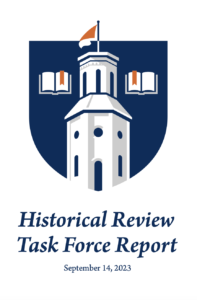 Summary: A Wheaton College task force released its report on Wheaton’s history of racial issues on campus.
Summary: A Wheaton College task force released its report on Wheaton’s history of racial issues on campus.
I am a 1995 alumni of Wheaton College, and since my time at Wheaton, I have been interested in racial issues at the school. Part of recent interest was sparked by reading Jesse Curtis’ The Myth of Colorblind Christians: Evangelicals and White Supremacy in the Civil Rights Era. It was only then that the history of Wheaton that I thought I knew was wrong. I was aware of my experience of Wheaton in the 1990s, and I have followed many events on campus since that time, including the firing of Dr. Hawkins. (There is a feature-length documentary that can be widely streamed.)
Wheaton was one of several Christian colleges that initially accepted Black and other racial minority students and then segregated in the early 20th century before desegregating in the post-Brown v. Board era. During my time at Wheaton, I was never aware of a period of segregation; I was only aware of its early history as an early abolitionist school that accepted black students from its founding. The main reason for this report is that Wheaton is attempting to grapple with that largely forgotten or repressed history. I am highly supportive of initiatives like this, and I am well aware that many supporters of Wheaton do not like initiatives like this because it reveals a less flattering history. There is a real risk to the school and the potential for growth.


 Born a Crime: Stories From a South African Childhood by Trevor Noah
Born a Crime: Stories From a South African Childhood by Trevor Noah The March Trilogy by John Lewis and Andrew Aydin with illustrator Nate Powell
The March Trilogy by John Lewis and Andrew Aydin with illustrator Nate Powell As You Wish: Inconceivable Tales from the Making of The Princess Bride by Cary Elwes
As You Wish: Inconceivable Tales from the Making of The Princess Bride by Cary Elwes Prophetic Lament: A Call for Justice in Troubled Times by Soon-Chan Rah
Prophetic Lament: A Call for Justice in Troubled Times by Soon-Chan Rah